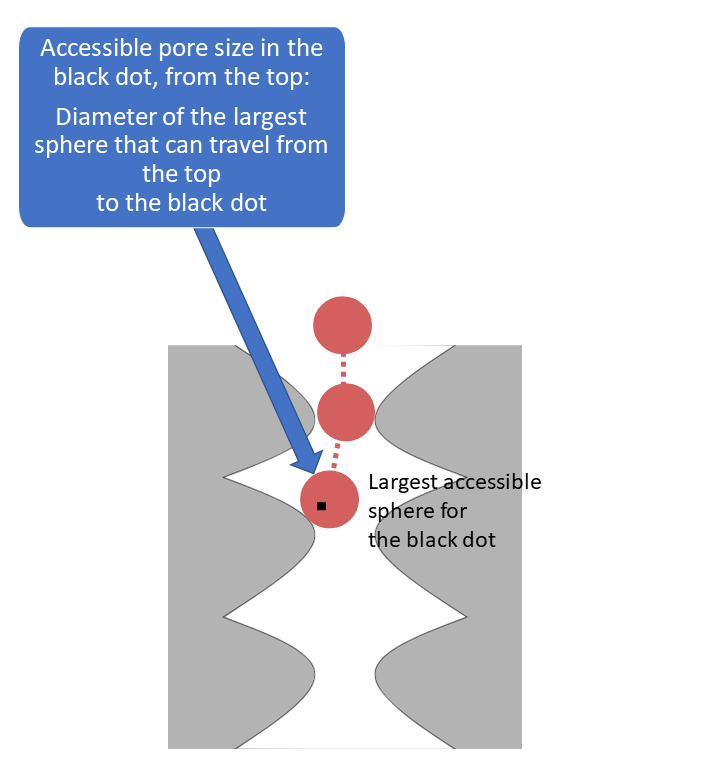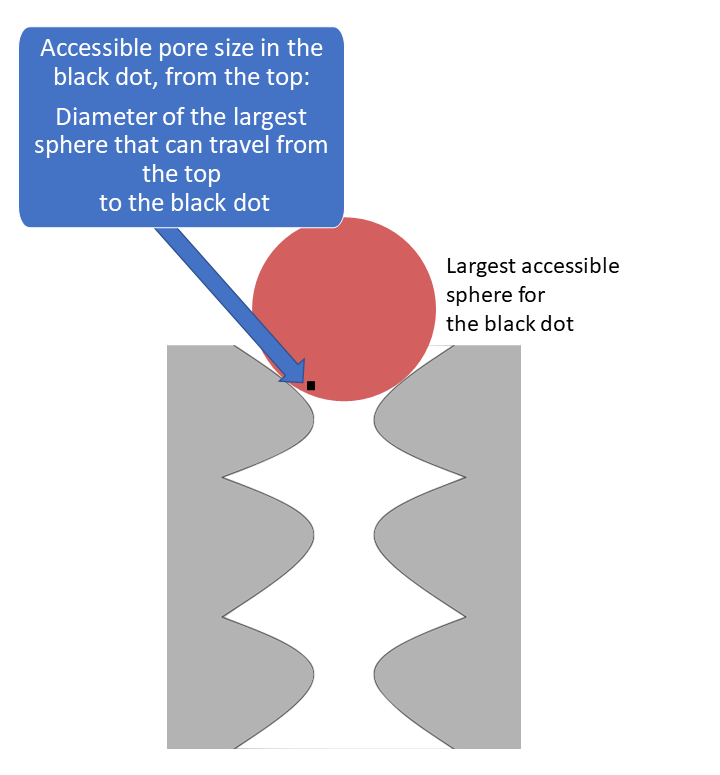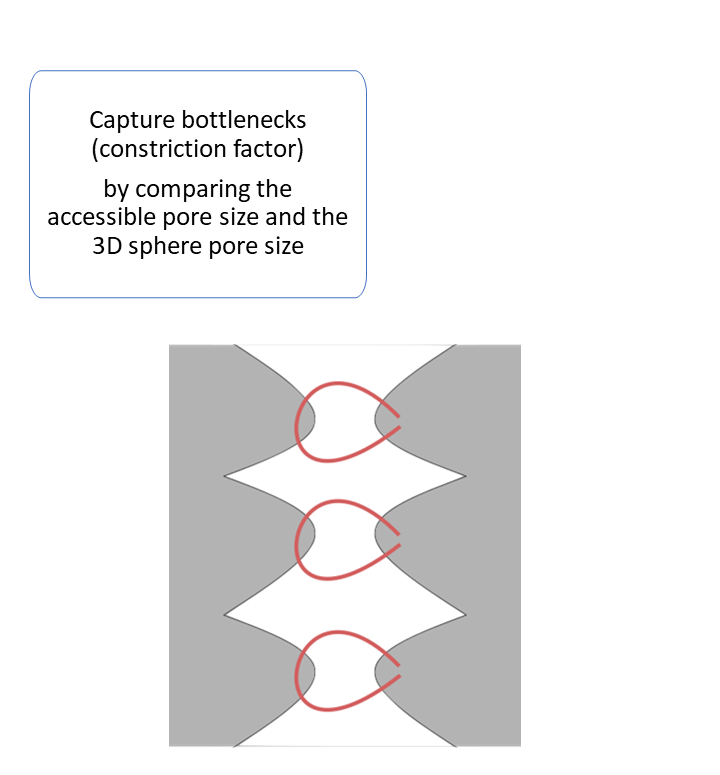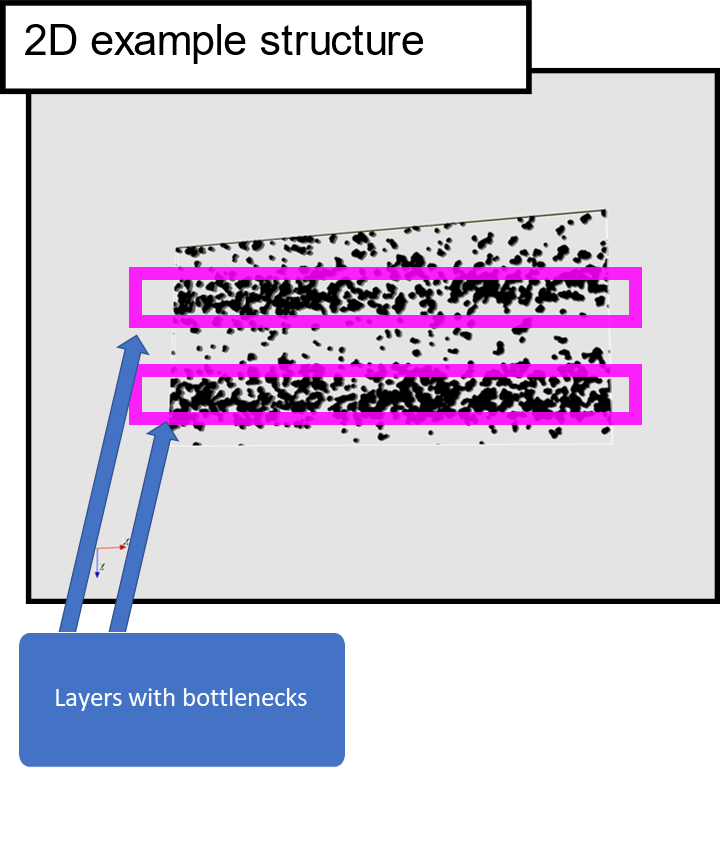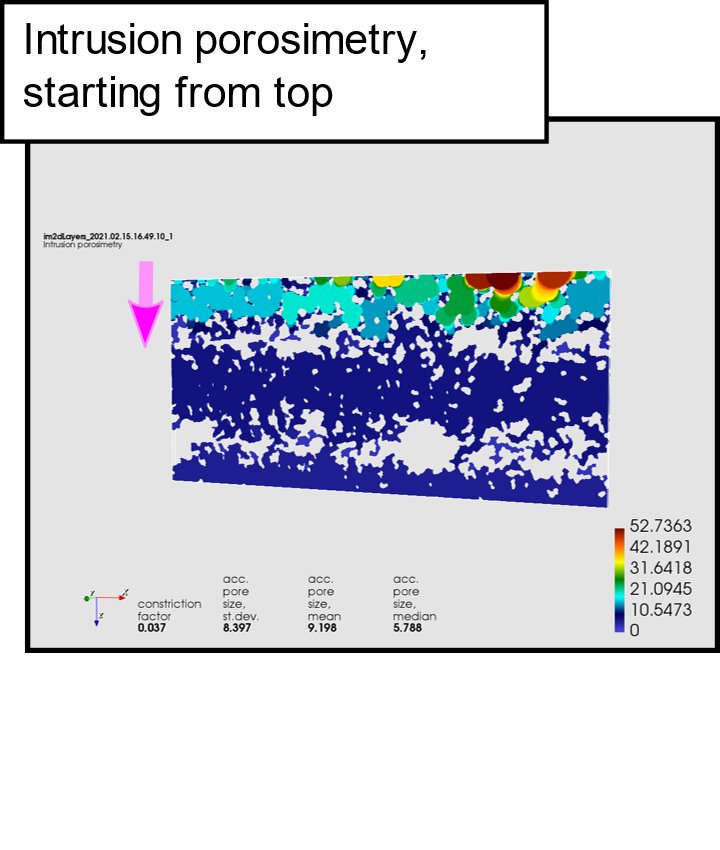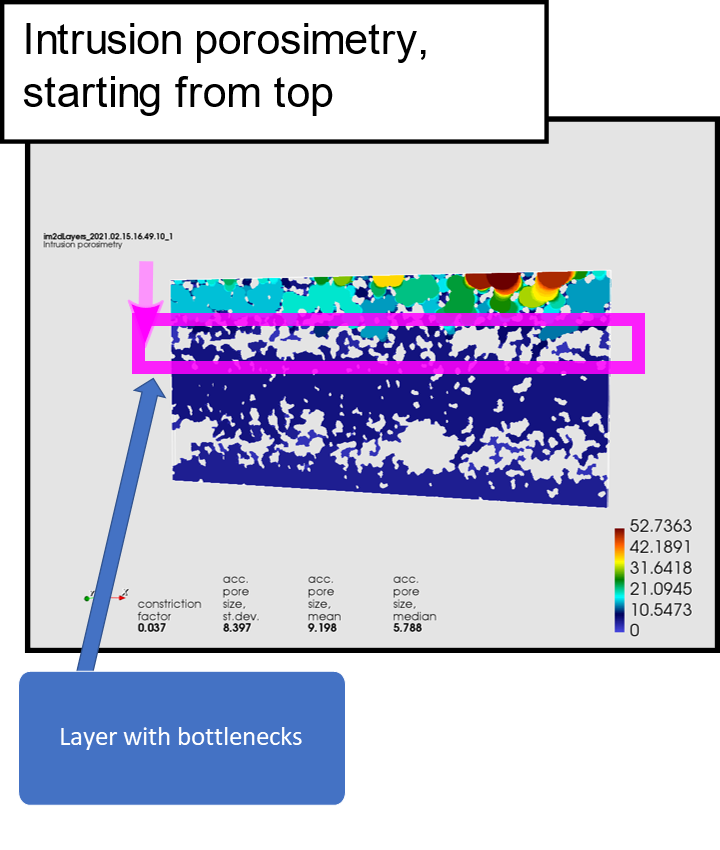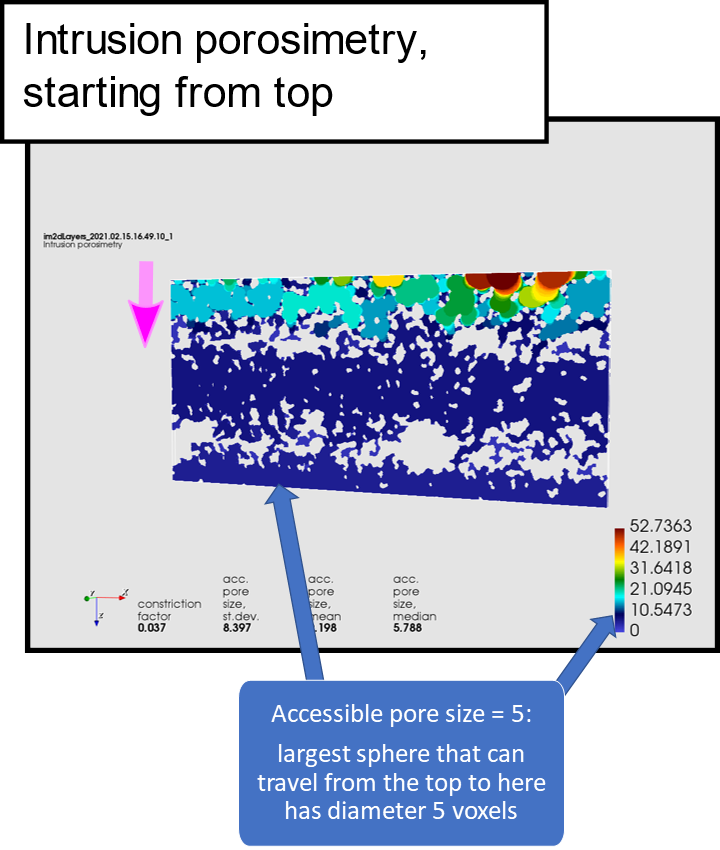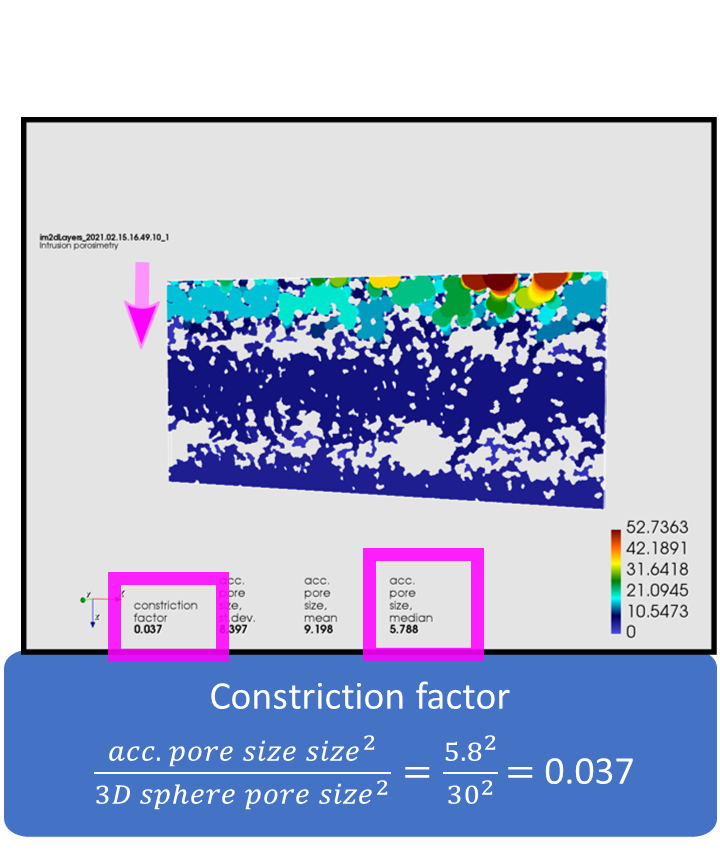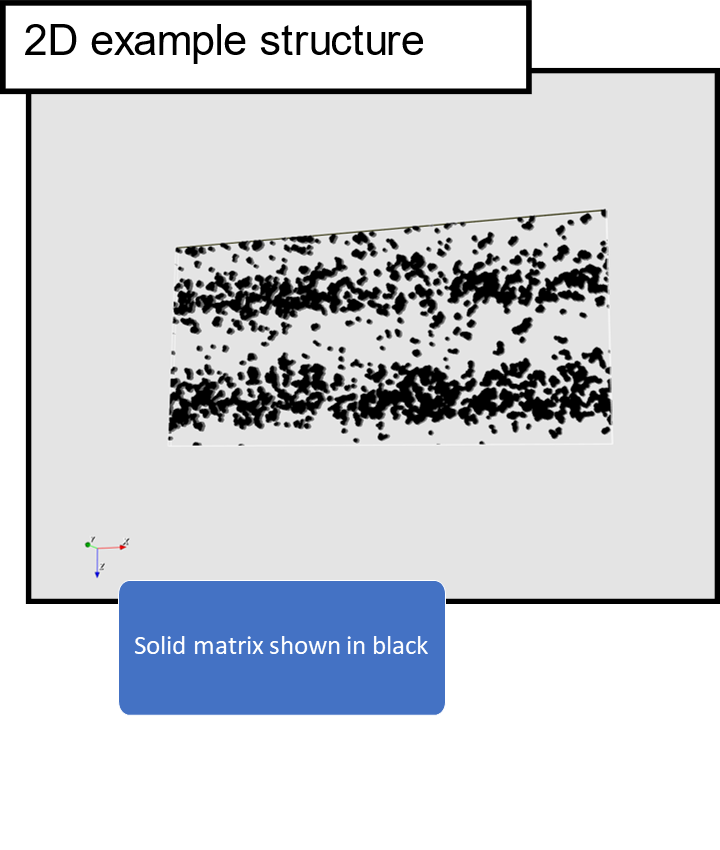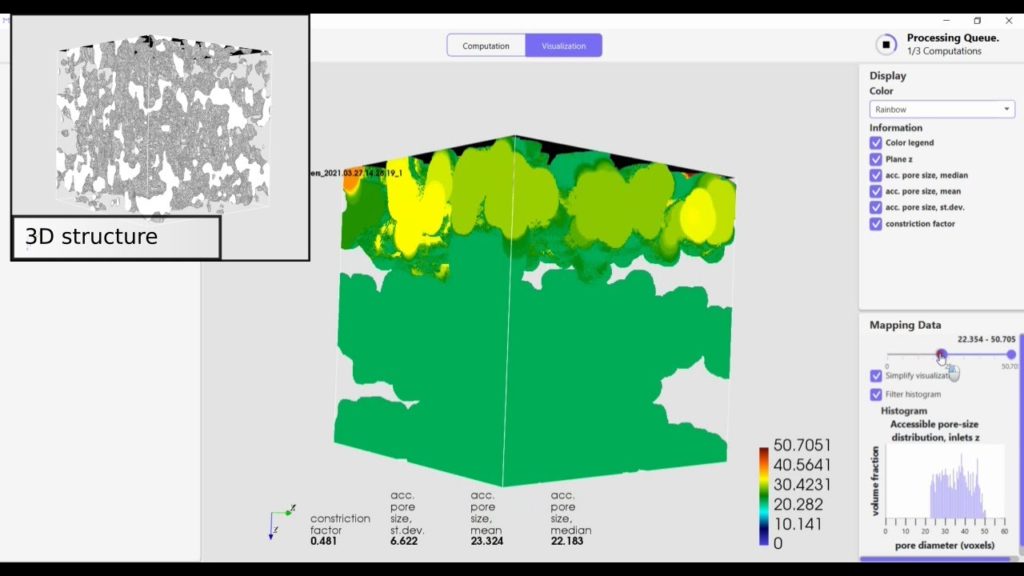The intrusion porosimetry method computes the accessible pore size, which is related to the size of bottlenecks in the pore network: whereas the 3D pore size is the diameter of the largest sphere that can be inscribed in the pore, the accessible pore size is the diameter of the largest sphere that can travel from chosen starting faces at the edge of the volume to the pore (see the illustration below). The method can be seen as a simulation of the experimental mercury intrusion porosimetry (MIP) technique, where pores are filled with mercury under pressure (Münch & Holzer, 2008). The accessible pore size computed by the intrusion porosimetry method in Mist is also sometimes called the MIP-pore size.
Definition, accessible pore size
The accessible pore-size in a point p is the diameter of the largest sphere that travel from the chosen inlets to the point p, covering p.
Definition, accessible pore volume
The accessible pore volume of size s gives the volume of points that have an accessible pore size equal to or larger than s.
In Mist
Each pore voxel that is connected to one of the chosen inlets is assigned the value of the accessible pore-size. Solid matrix voxels and unconnected pore voxels have value 0.
The implementation of intrusion porosimetry in Mist is described in detail in the reference manual (see also Scientific resources).
The squared ratio between the median accessible pore size and median 3D sphere pore size, is called the constriction factor, and so the constriction factor gives a relative measure of bottlenecks in the 3D structure (the cross-sectional area of a cylinder shaped pore is proportional to the squared pore size). Accessible pore size, volume and the constriction factor can give good predictions of material properties such as wettability, mass transport and electrical conductivity, see
Intrusion porosimetry illustration
Intrusion porosimetry
in Mist
How to compute intrusion porosimetry
in Mist
The video below shows how to compute the intrusion porosimetry in Mist for a demo structure that can be downloaded from here.
